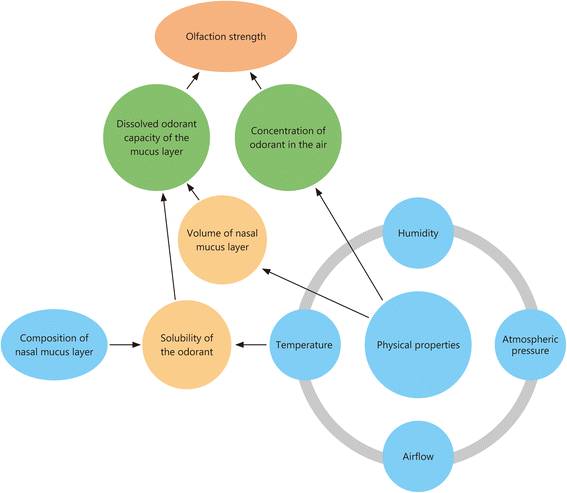Olfaction as a soldier-- a review of the physiology and its present and future use in the military
- PMID: 28344819
- PMCID: PMC5359863
- DOI: 10.1186/s40779-017-0119-4
Olfaction as a soldier-- a review of the physiology and its present and future use in the military
Abstract
Olfaction is one of our 5 main qualitative sensory abilities. In this review, we have examined the physiology of olfaction from the olfactory receptor to the brain. Through analyzing the physiology of olfaction, we have found that the biochemistry of olfactory nerve stimulation is unique from that of other similar pathways. Upon receiving large amounts of input from the olfactory nerve, the olfactory bulb, followed by several layers of centrifugal and centripetal processing in the brain, has to sort the information from the input as well as integrate it with other inputs from the brain to develop a coherent understanding of the input. We then examined the implications of olfaction in the military, the practical applications of electronic noses and problems associated with injury to olfaction that could affect compensation and combat worthiness of a soldier following injury. In the military, olfaction can allow the army to perform at its best through 4 main methods, namely ensuring olfaction is consistent with other dimensions of perception (ensuring optimal olfaction ability in all soldiers in combat), understanding the impact of different common combat environments on the sense of smell, utilizing odor as a defense mechanism and using olfactory aids when necessary. Electronic noses are olfactory aids that have a large potential in the military ranging from saving lives through the detection of explosives to potential methods for improving combustion efficiency. There are several problems associated with injury to olfaction that should be considered when deciding on compensation and combat worthiness of the soldier following an injury.
Keywords: Combat; Compensation; Electronic nose; Injury; Military; Olfaction; Physiology.
Figures


References
-
- Pinel JP. Biopsychology. London: Pearson education; 2009.
-
- Elmar Schmeisser KAP, and Tomasz Letowski. Olfaction Warfare: Odor as Sword and Shield. pp. 52: U.S. Army Research Laboratory; ATTN: RDRL-HRS-D; Aberdeen Proving Ground, MD 21005. 2013:52.
-
- Ryan MA, Homer ML, Buehler MG, Manatt KS, Lau B, Karmon D, Jackson S. Monitoring space shuttle Air for selected contaminants using an electronic nose. Handb Machine Olfaction: Electron Nose Technol Weinheim: WILEY-VCH. 1998;1:525–546.
Publication types
MeSH terms
Substances
LinkOut - more resources
Full Text Sources
Other Literature Sources
Medical

